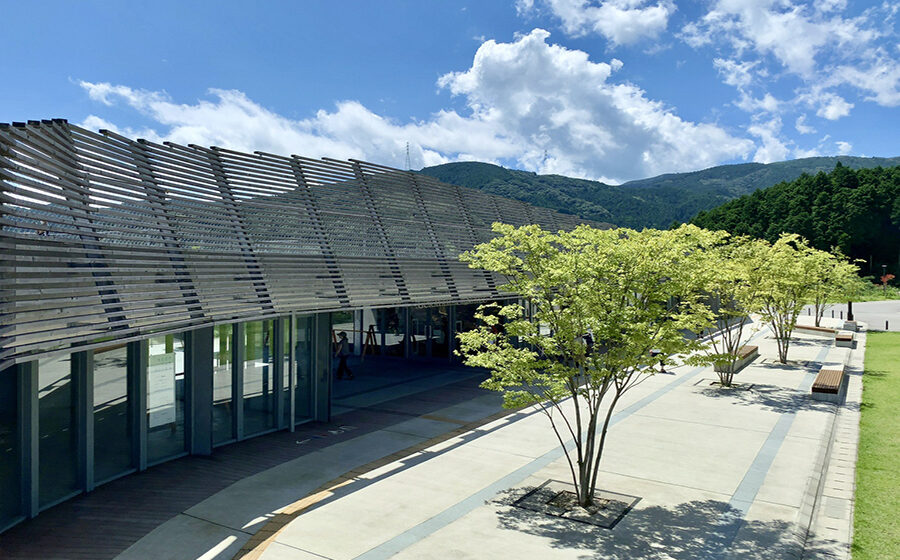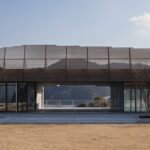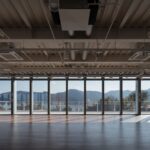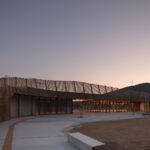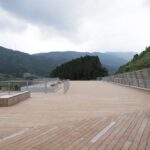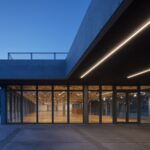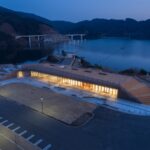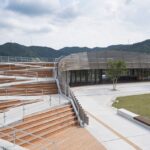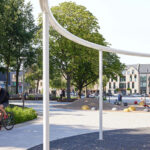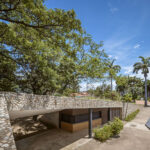Designed by yHa architects, the Gokayama Cross Base stands as a testament to architectural innovation and community development in Nakagawa City, Fukuoka, Japan. Selected as part of a tourist base facility proposal in September 2016, the project aimed to promote tourism around the Gokayama dam lake, completed in 2018.
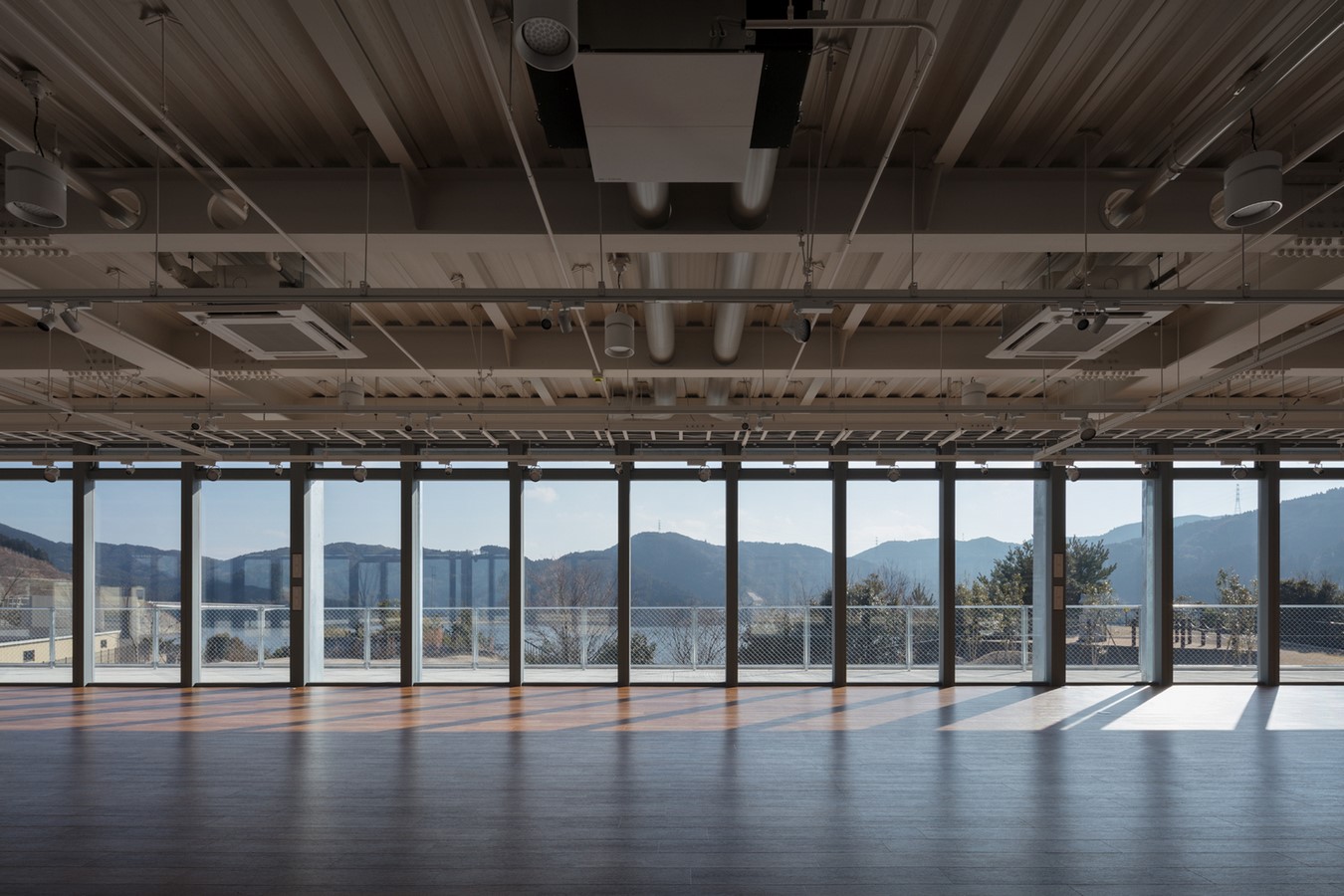
Integrating Nature and Architecture
Situated near the dam lake, the Gokayama Cross Base features a roof terrace adorned with a natural wood deck, offering visitors a picturesque view of the surrounding landscape. Gentle staircases and sloping benches provide inviting spaces for relaxation, seamlessly connecting the parking lot to the roof terrace. The architects prioritized creating a harmonious blend of landscape and architecture, ensuring a sense of unity throughout the site.
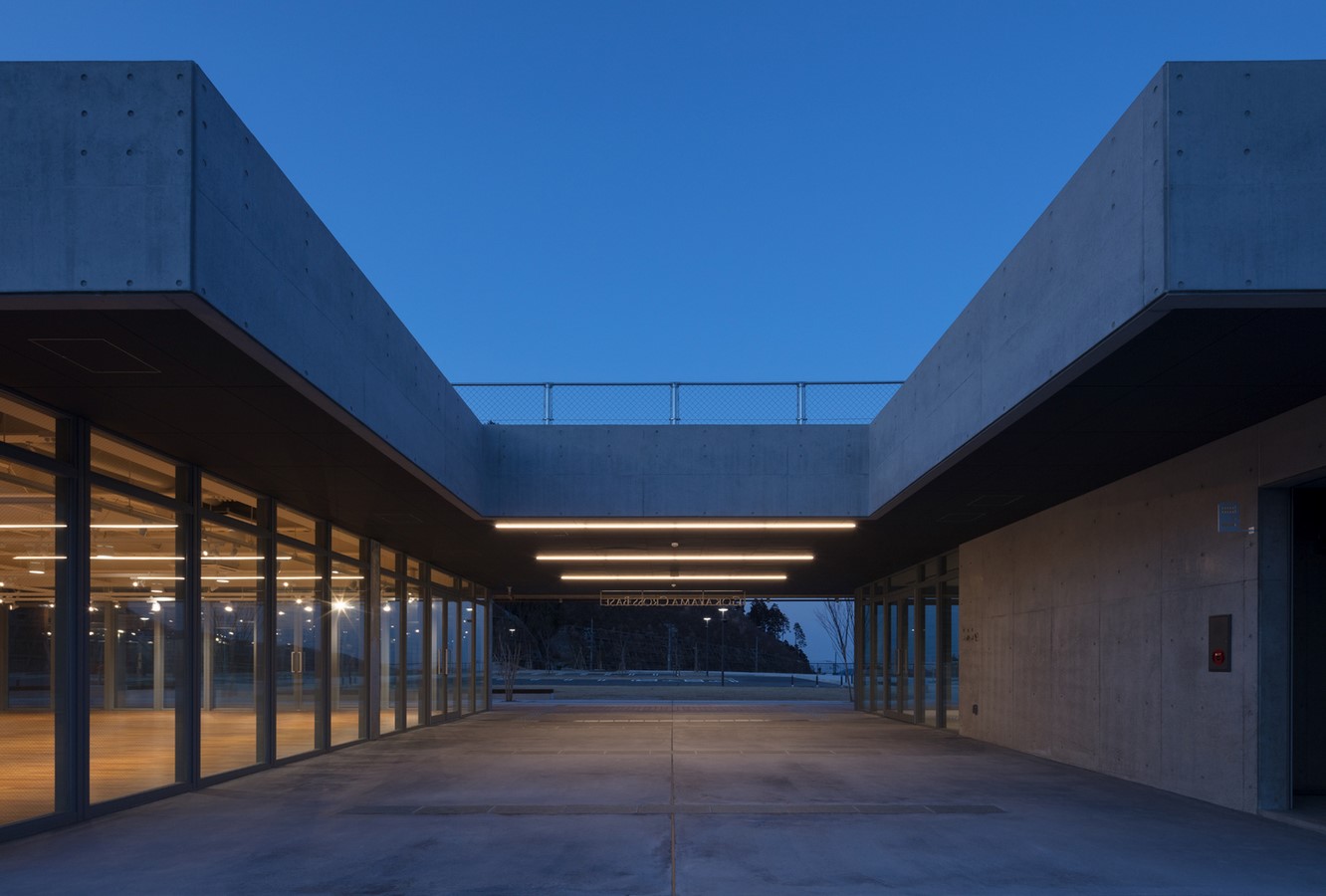
Symbolism and Functionality
A distinctive feature of the project is the natural wood louver crafted from Nakagawa city’s Japanese cypress, treated with heat to enhance durability. Symbolizing the Gokayama area, the louver’s design mimics the contours of the mountains, adding a new visual symbol to the landscape. The structure itself adopts a civil engineering typology akin to a bridge, with reinforced concrete kitchen cores and steel columns and beams. This design choice allows for the framing of the surrounding landscape while maximizing the use of existing facilities.
Embracing Scale and Detail
In line with the monumental scale of the dam, the Gokayama Cross Base embodies a landform architecture characterized by large, coarse resolution details. Rather than delicate intricacies, the design focuses on bold, robust elements that complement the grandeur of the civil engineering project. By embracing this approach, the architects aimed to create a space that resonates with the magnitude of its surroundings.

The Gokayama Cross Base stands not only as a functional facility but also as a symbol of community pride and innovation. Through thoughtful design and meticulous attention to detail, yHa architects have crafted a space that not only enhances tourism but also celebrates the natural beauty and engineering achievements of Nakagawa City.

